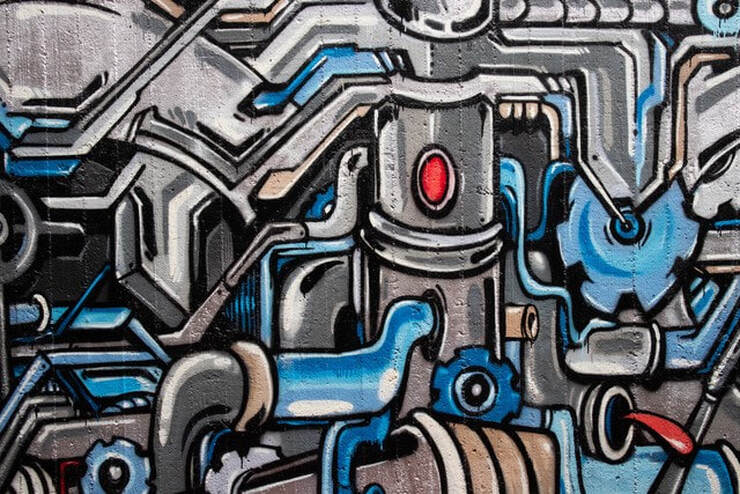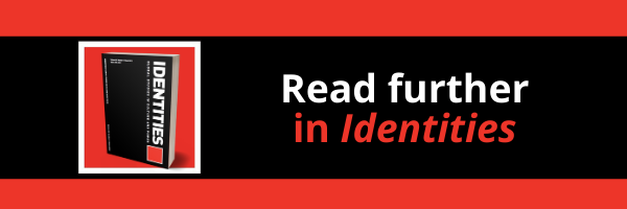|
|
|
Cities represent simultaneously one of the crucial evolving realities and at the same time blind spots in the interdependent political and economic order of the early 21st century. This order is dominated by usual suspects of states, corporations and their cross-border operations, and international organisations, as well as occasional rogues such as criminal networks, armed groups or unruly territories and polities. Yet cities are major battlefields of social and political struggles of our time as well as primary theatres of violence and war.
Exclusions, enclosures and fences, incorporating both visible and invisible walls, are the growing reality of our urban experience. This is where global flows of capital demonstrate their splendour in concrete and glass, in luxury apartments and glittering skyscrapers, even swimming pools in the sky exclusively for the rich. The wealth attracts misery to keep the whole unequal organism alive and the contemporary misérables live in ruined neighbourhoods, distant suburbs and slums.
Although scholars put a lot of intellectual effort into analysing contemporary cities as major social, cultural and economic nodes, we think a different – and trickier – type of endeavour might be crucial at this specific historic juncture. We live in an era in which global capitalism, as well as the influence of territorial and non-territorial entities, render the status of citizen and non-citizen themselves highly ambiguous, anxiety-ridden and unstable. Being a citizen today means dealing with often undecipherable legal complexity, political frustrations, but also unforeseen opportunities.
In our recently published Identities article, 'The constitutionalisation of cities and the future of global society', we paint a picture of this dramatic and dialectical process under way. It is based on the tension between the citizenry, which operates as a constitutionalising force within cities through lived experiences, practices and engagement and the cities, which try to impose themselves — not only as city authorities but also as major spaces of human life on the planet and as constitutionalising forces within a rapidly transforming and highly unequal global society. In other words, the tension arises here between democratic impulses on behalf of the urban ‘people’ to shape their immediate political communities and thus constitutionalise their role and achievements, and the cities as constituted entities struggling to constitutionalise themselves among constituted subjects and actors of today’s world. When we speak of constitutionalising forces we understand that cities are in the process of constituting themselves as semi-sovereign, autonomous and self-managed political entities and, at the same time, as the principal laboratories where urban citizenship is practiced and lived within a complex multi-layered constitutional setup of the global society. We have therefore chosen the term of constitutionalisation carefully to give us interpretative flexibility when confronted with both the gradual and often informal empowerment of cities as national and international political actors and the multiplicity of urban citizenship practices that feed into this major political and social development. The constitutionalisation of cities rests on the idea of an urban imagined community, which, to paraphrase Benedict Anderson, is ‘inherently limited’ by administrative city walls but is not and does not seek to be ‘inherently sovereign’ as does the national imagined community. The direct conflicts between the nationalising state, that still sees itself as sovereign over its internationally recognised territory, and ever more assertive cities might further intensify. We can mention here the conflict between Italian mayors and the central government over the appropriate treatment of refugees and migrants or the case of ‘sanctuary cities’ in the US that seek to limit the federal authority over the immigration status of their residents. These cities want to treat, informally, people within their territory as equals. Instead of the idea of protected and rigid borders, they opt for fluidity and hospitality. The outcome is not given in advance. The mayor of Palermo, Leoluca Orlando continues to offer the city’s citizenship to arriving migrants in his fight for the ‘abolition of residence permit’, while his colleague Domenico Lucano, the mayor of Riace in Italy, was recently sentenced to 13 years in jail for welcoming refugees in his town. The subversive constitutionalisation of cities within global society could also be observed in various already existent autonomous practices: for example, municipal assemblies in powerful and rich cities are often the sites of intense political struggles; sometimes cities, usually capital cities, are more powerful than states themselves; cities can even create their semi-independent foreign policies connecting with other cities or defying state authority. On the other hand, the constitutionalising forces are those that animate the constitutionalisation processes and can be observed in urban citizenship practices such as in democratic innovations, including city or neighbourhood assemblies, autonomous forms of citizens’ self-governance in occupied spaces from squats, occupied universities or squares to Capitol Hill Autonomous Zone in Seattle in June 2020, common spaces and social centres, or in urban gardens or parks managed by citizens themselves in Barcelona or Athens. Indeed, emerging urban political communities are already there, often involving non-national residents and refugees. However, if at the global level we can detect general trends, all of us tend to live in specific places and localities. Our understanding of this complex and conflict-ridden process of the constitutionalisation is therefore contingent upon how we see and read each and every city, its uniqueness, its position and heritage, in this highly unequal globalised transformation. We suggest thus the following four questions, the answers to which would determine the tensions and outcomes of the constitutionalisation processes in any given city: what is its present character, and how it was shaped by geography and history? What social and economic processes could be observed in the city? How can we ‘read’ the changing cityscape which emerges consequent upon its character and the socio-economic processes that could also be influenced by citizens themselves and their collective action? And, finally, how do urban chronotopes, as specific amalgams of concrete spaces and historic experience, influence the present constitutionalisation processes, especially collective imaginary and action? Cities will influence their citizens, their individual, social and political potentialities and limits, based on their character, the processes shaping them, their built cityscape, and finally those specific sites that we call chronotopes, which are constitutive of political and social actions. We suggest these four elements allow us to distinguish between different formal and informal processes within cities that position cities themselves in highly uneven ways on the global map. Cities as administrative units are attempting to carve out a different position for themselves in our century, which arguably breaks with many of the characteristics of modernism, which favoured (nation-)states and their relations. At the same time, the city is a laboratory for new forms of citizenship that generate revived understandings of membership, participation and belonging removed from formal status and recognised passports towards lived experience of proximity and localised democratic experiences. This situation is necessarily one of uncertainty, tension and conflict but also of empowerment and creativity.
Image credit: Author's own.
Blog post by Jo Shaw, University of Edinburgh, UK / Tampere University, Finland; and Igor Štiks, Faculty of Media and Communications, Belgrade, Serbia / Faculty of Arts, University of Ljubljana, Slovenia
Read the Identities article: Shaw, Jo & Štiks, Igor. The constitutionalisation of cities and the future of global society. Identities: Global Studies in Culture and Power. DOI: 10.1080/1070289X.2021.1970981 [Open Access]
Explore other relevant Identities articles:
The governmentality of multiculturalism: from national pluri-ethnicity to urban cosmopolitanism in Bogotá [Open Access] Towards a ‘new’ Moroccan capital? Democratisation, diversity politics and the remaking of national space in Rabat From the spectacular to the mundane: radical democracy in the open city
0 Comments
Your comment will be posted after it is approved.
Leave a Reply. |
|
Explore Identities at tandfonline.com/GIDE |
|
The views and opinions expressed on The Identities Blog are solely those of the original blog post authors, and not of the journal, Taylor & Francis Group or the University of Glasgow.


